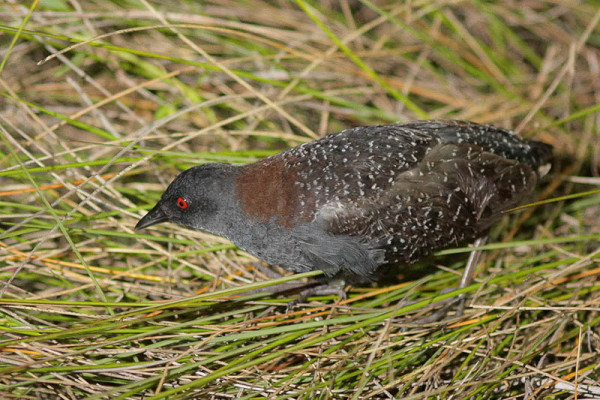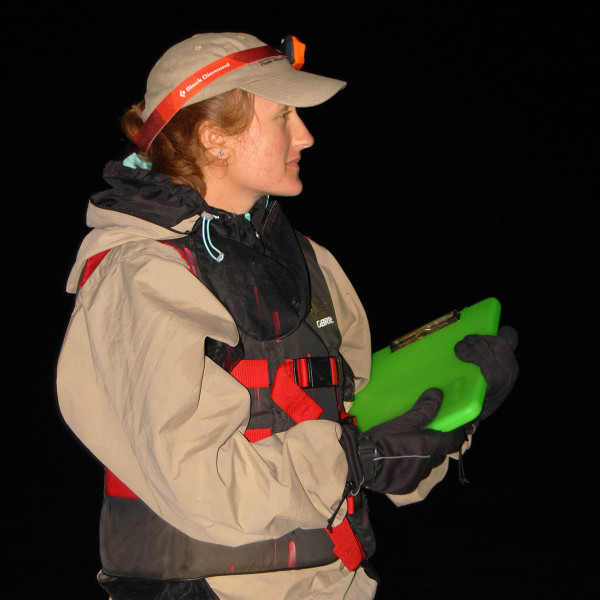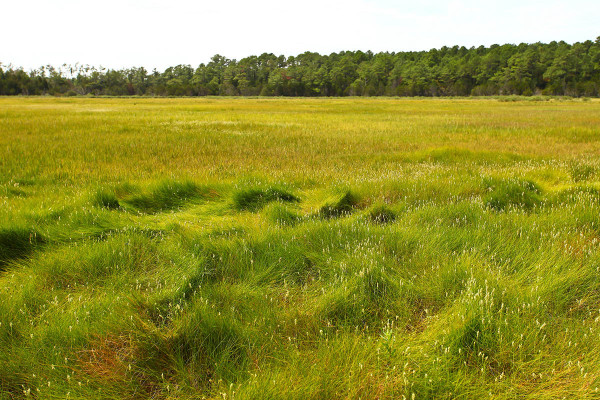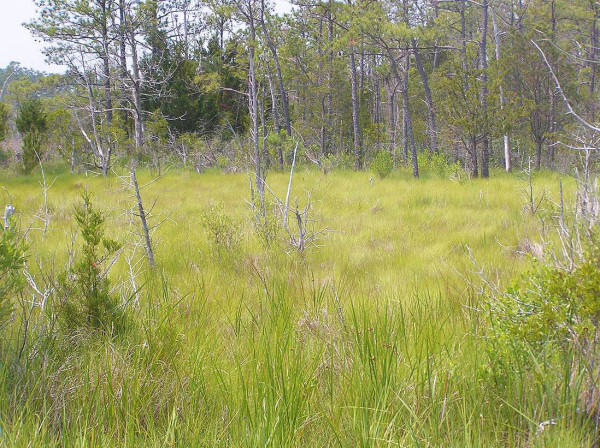Navigating a Survey to Save a Species
The Team Sport of Peregrine Hacking
September 24, 2014Landfill week
September 29, 2014
This past summer, researchers for the Center for Conservation Biology (CCB) embarked by boat almost every night in a race to help the Atlantic Coast’s most imperiled bird. Over the past 15-20 years, black rail populations have rapidly declined to dangerously low levels that place them at risk of extirpation. Determining exactly where black rails still occur is the critical first step towards their conservation. CCB is leading focused survey efforts in North Carolina and Virginia to gather the information needed to help ensure their long-term survival. However, surveying for this species befalls a particular set of logistical challenges. Black rails require high marsh zones within some of the Atlantic Coast’s most remote locations. Most of these areas can only be accessed by boat during high tide. In addition, black rails vocalize most reliably at night, so the best survey times coincide when navigating waterways can be most treacherous for survey teams.

The black rail is the most imperiled bird species along the Atlantic coast and could be extirpated in several portions of its range without emergency management. Photo by Greg Lavaty.
In North Carolina, Zak Poulton and Katie Rittenhouse piloted the CCB’s 17-ft Maycraft up narrow channels, across the mouths of rivers, and on the big waters of the Pamlico Sound. They were relying only on a depth finder, the on-board GPS, and a keen mariner’s sense to avoid the pitfalls of nocturnal navigation, such as running aground or taking on too big a wave. Zak and Katie’s efforts were being matched by Fletcher Smith and Jake McClain, who were conducting parallel surveys for black rails in the Chesapeake Bay and Barrier Island lagoon system of Virginia. Both survey teams had a common approach: visit as many accessible high marsh locations as possible throughout the season using a game caller to broadcast the not-so-familiar “ki-ki-kerr” and other black rail vocalizations at high volume in an attempt to increase detection from responding birds. Black rails exhibit some of the most enigmatic vocal behaviors among all birds in the United States. Their calling rates are irregular and appear to be moderated by unknown factors. A visit to a black rail marsh can produce calling birds one night and be silent the next. Because of this, the biologists re-visited these locations three times during the season.

Katie Rittenhouse dons anti-mosquito gear to conduct a nocturnal black rail survey in North Carolina. Photo by Zak Poulton.
The North Carolina survey project marked the first time that a broad-scale, systematic survey for black rails has ever taken place in the state. Previous efforts conducted by researchers have only focused on surveying small sets of marshes. Our study is being funded for two years by the North Carolina Wildlife Resources Commission in an effort to document distribution and habitat use and to create a first-of-its-kind population benchmark for the state. However, this is the second time we have conducted a systematic, state-wide effort in Virginia. Both the 2014 summer survey and a previous effort conducted in 2007 in Virginia were funded by the Virginia Department of Game and Inland Fisheries and were designed to produce the same level of information as North Carolina.

Transition zone between high marsh (foreground) dominated by saltmeadow hay (Spartina patens) and low marsh (background) dominated by low-saltmarsh cordgrass (S. alterniflora). Black Rails are dependent on the high marsh for breeding but may also use the ecotone pictured here for foraging purposes. Photo by Bryan Watts.
Black rails were detected at 15 of 153 locations visited by Zak and Katie in North Carolina. However, 9 of these locations were directly adjacent to one another along the stretch of Highway 12 that bisects Cedar Island (Carteret County). The remaining sites were scattered throughout coastal marshes in the southern half of the state and only accessible by boat. Next year we will survey the Albemarle Sound region and the Outer Banks.
The Virginia survey results tell a tale even grimmer than what we discovered in 2007. Seven years ago we determined that black rails were at very low population levels and only occurred at 12 of 328 surveyed locations. Black rails had disappeared or were reduced in numbers at some of the most widely known locations in the state. This past summer, black rails were only detected at 1 of the 12 locations previously recorded in 2007 and were not found at any of the 123 other sites. The lone holdout marsh at Saxis, which was known throughout the 1980s and 1990s to harbor as many as 25 black rails, appears to be gasping its last breath for this rail with the detection of only 2 birds.

Transition zone between the high marsh and upland. Black rails often breed within 100m of the tree line in marshes dominated by salt meadow hay that is often interspersed with shrubs, stunted pine trees, and red cedars. Photo by Fletcher Smith.
The Center for Conservation Biology is committed to creating the information resources needed to formulate the best management approaches to save this species. Black rails are on a crash course for extirpation. Without management intervention, it is likely that the black rail will disappear from many of last remaining places it occurs in our lifetime. Black rail existence on the Atlantic coast is threatened by sea-level rise, nest predators, and incompatible management of marshes, such as mosquito control, deepwater impoundments, or the ill-timed use of prescribed fire.
Written by Mike Wilson | mdwils@wm.edu | (757) 221-1649
September 26, 2014




